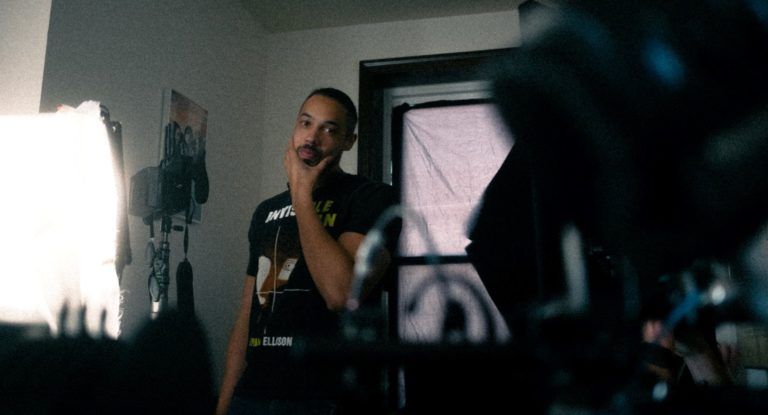
The Nomad: A Jai Jamison Origin Story
“Representation matters,” they say. And rightfully so. To see a part of yourself on-screen or on the page spurs the need to emulate and one day grow taller than your predecessors. Jai Jamison is further proof that, in the arts, we’re defined by what we immerse ourselves in—what we’re exposed to. In his case: a storyteller, once deeply affected by a single cinematic moment, now driven to “push farther” and never forget his purpose. No rest for a former nomad.
When he was 15, Jai Jamison went to an empty theater in Richmond, Virginia to see a relatively under-the-radar film: Finding Forrester.
It had opened nationwide in January 2001 amidst a crowded field. Cast Away, Traffic, and Crouching Tiger, Hidden Dragon were making headlines. Each would go on to claim major awards in the months to come. Even still, Forrester did respectable business and garnered decent reviews, though not from New York Times critic Stephen Holden, who famously lambasted the film’s portrayal of the Black protagonist as “the Perfect Negro” and ultimately branded the whole affair as “100 percent bogus.”
But when the lights dimmed, within minutes, Jamison knew he was experiencing something he’d never experienced before. He felt seen.
In Jamal Wallace, played by newcomer Rob Brown, Jamison saw much of his own bifurcated identity reflected back to him for the first time. Like Jamal, he was a young Black kid who had gone to private school. He played basketball. He wanted to be a writer. And, exactly like Jamal, he felt like he lived in-between, straddling the line of demarcation between two worlds in a way so few did.
It was revelatory.
“I remember sitting in the theater, when the credits rolled, just crying,” Jamison said.
“To have that portrayed on the screen in a way that is so nuanced, and so raw, and so real, was revolutionary for me. That was when I knew I wanted to make films. I wanted to put representations on the screen that had kids who looked like me.”
Being seen hasn’t been an issue for Jamison of late, figuratively or otherwise. At 6’5”, sporting a trademark ponytail, he stands out in a crowd. In his hometown of Richmond, he amassed an impressive list of accomplishments and mentors on his way to winning the Virginia Museum of Fine Arts Fellowship. After working behind the scenes on high-profile Virginia projects like Steven Spielberg’s Lincoln and AMC’s "Turn," he wrote and directed the award-winning short film Slave Cry, a provocative exploration of the dearth of dramatic roles for Black actors in the state. It would eventually serve as a launching pad for his first job in a writer’s room.
Lately, though, a journey that started back when he was churning through X-Men comics and 700-page fantasy novels as a kid has found Jamison, now 35, carving out a path in North Hollywood as a staff writer on "Superman & Lois"—after only a year in Los Angeles. He’s on his way to achieving the representation he so badly yearns for, a desire born, in part, from that winter day he saw Forrester two decades ago.
“That film changed my life. It changed the course of who I am and what I’m doing,” Jamison said.
“I don’t know if I would be a filmmaker, and the filmmaker that I am now, if that film didn’t exist.”

The “in-between” can be a lonely place—growing up Black in the capital of the Confederacy can make it even lonelier.
For Jamison, it had its ups and downs.
In school, he was often “too white” to hang with the Black kids, and “too Black” to hang with the white kids. He says he wasn’t actively ostracized—in fact, he was cool with most people and had a small, core group of friends. But there was a sense he was missing the sort of seamless friendship that comes with acceptance into certain groups. Over the years, his activities ranged from AAU basketball to playing in Pokémon tournaments, as it exploded in popularity in the late-90s and early-2000s. He was so good at the latter (he describes his Pokémon card deck as “unstoppable”) that the group he played with changed the rules to even the odds. At home, he watched shows like "Fresh Prince of Bel-Air" and "Sports Night," Aaron Sorkin’s first foray into television.
Between living in the shadows of Civil War monuments dedicated to slave-owning generals and lacking a clearly defined circle of school friends, Jamison sought other outlets for escape. He regularly devoured dense fantasy novels as a pre-teen, taking to Robert Jordan’s extensive series The Wheel of Time, which spanned 14 novels and averaged about 800 pages each. He admits he only finished the first four or five books, but couldn’t put them down.
“I would always have a book on me. Like, just, in my pocket,” he said.
“Whenever there was an opportunity, I would pull out the book and start reading.”
Perhaps his most influential discovery came in a grocery store when he saw the cover for an X-Men comic and immediately had to have it. After that, comics became a years-long obsession, blossoming into a monthly, $200-$300 habit initially funded by an allowance and chore money from his parents.
“At some point, it wasn’t even chores anymore,” Jamison said, laughing. “I just negotiated with my parents for comic book money, and I had this box, and I would just stroll into the comic book shop with it and look around.”
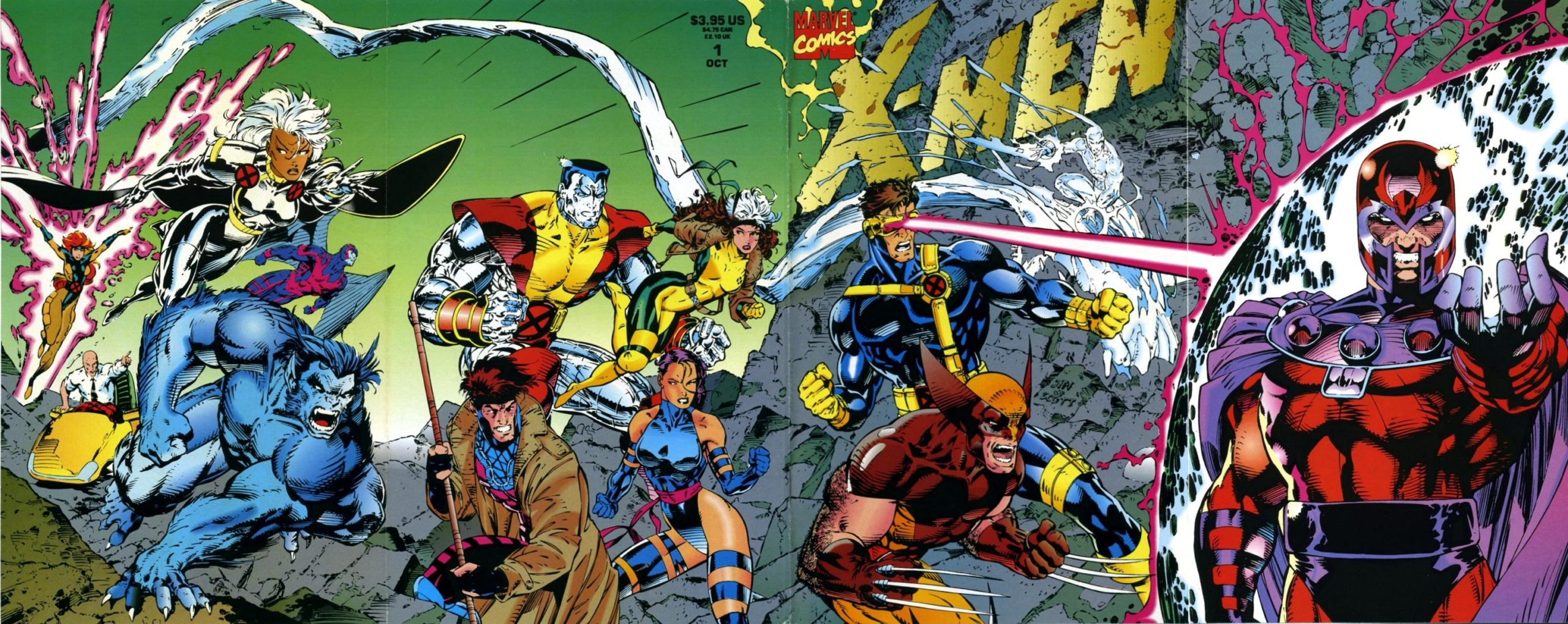
Spider-Man, Robin, Generation X, Daredevil ... In those comics and fantasy novels, Jamison found the escapism he craved, while oftentimes adding his own twist: he’d breeze over character descriptions and, instead, add his own imagined features and characteristics. He reveled in creating his own worlds.
“There were always other issues, metaphors for societal issues and things going on, but you could create the characters as you see them. It was full-on escapism,” he said.
“Being a Black kid who lived in this place, in the capital of the Confederacy, I could escape to a different world.”
The story of X-Men spoke to him specifically, with its broad themes of acceptance and tolerance for those looked at as different, characters like Storm and Bishop.
“The portrayal and images, it was such a diverse and colorful team of people.”
At some point in high school, he stopped his comic book habit cold turkey. He was simply spending too much money. But soon, a confluence of events would lead to him falling in love with film, cementing his desire to be a creator while retaining the sense of escapism he’d become enamored with throughout his school-age years.

You might say it all began with Cousin Muncie.
Before his junior year of high school, Jamison welcomed a new addition to his household: his cousin Muncie, who’d just graduated from college. Muncie had gotten a job in Richmond and needed a place to stay while he finished his post-graduation transition. It was supposed to be for two or three months.
It ended up being two or three years.
Jamison wouldn’t have had it any other way. He was 15 at the time, and it proved to be a critical year. Only a few months prior, he’d seen Finding Forrester, which lit a fire under him and, as he recalls, “showed me what film could do.” Soon after, Muncie moved in, and almost immediately the two forged a brotherly bond. That’s when they began a ritual that will seem familiar to anyone who spent their weekends in the early-2000s watching films.
“Every Friday, we’d go to Blockbuster and wander around for like an hour,” Jamison said.
“The in-person version of the Netflix scroll! Just looking at the covers of DVDs. Usually we would get two or three for the weekend. One classic, one recent that maybe had just come out. We would have our own little film festival over the weekend.”
Those weekend festivals were formative. They’d routinely watch a film on Friday nights, then talk about and analyze what they’d seen the next day while running errands or driving around town. That night, they’d do it again. Jamison remembers being enamored by Hollywood Shuffle, Robert Townsend’s 1987 film that satirically examines the limited roles for Black actors in Hollywood. Muncie had already seen it and assumed his younger cousin would love it, too.
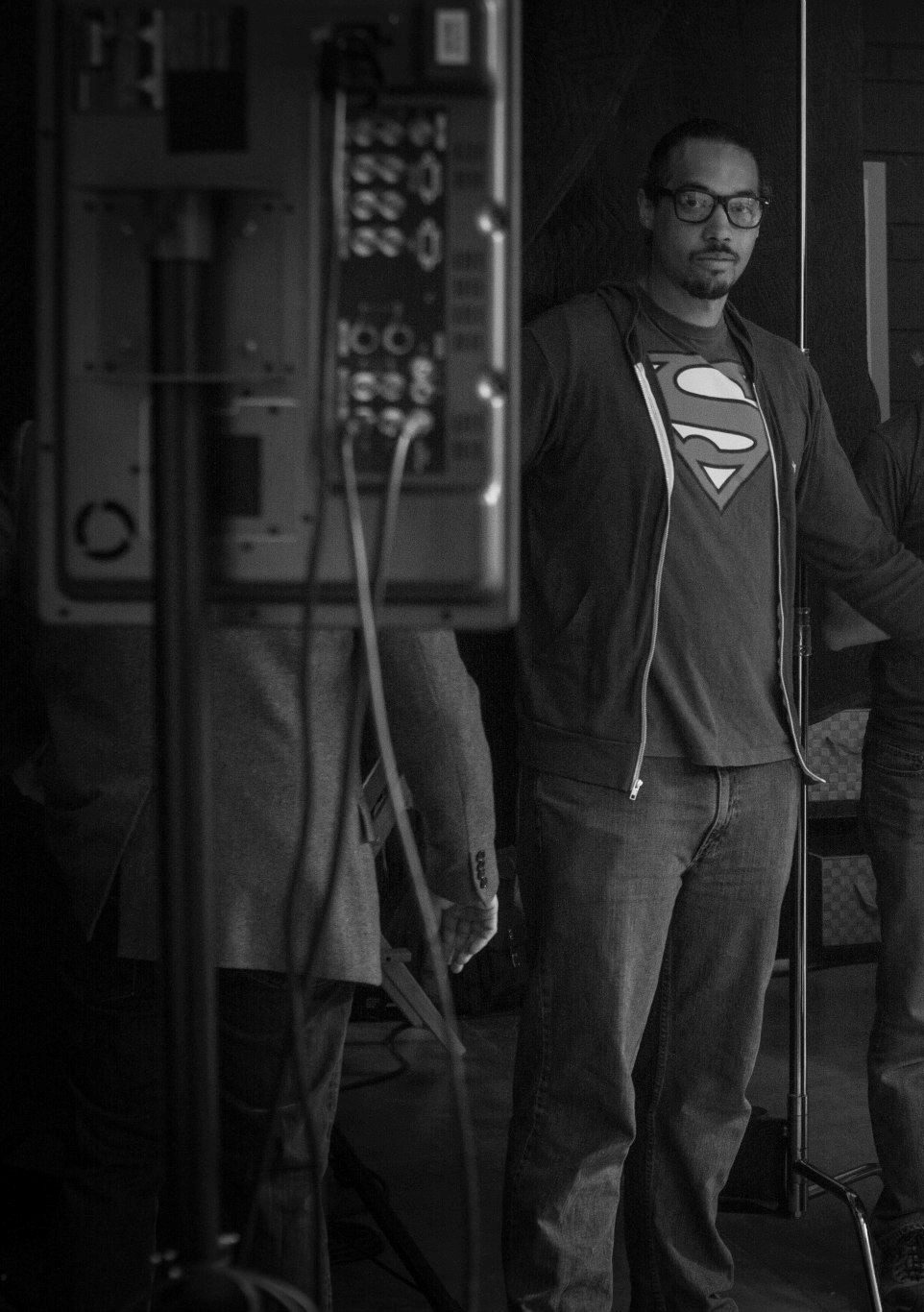
“We watched it like three times that weekend,” Jamison said.
“It was so funny, and I loved it so much. I watched it again recently, and I realized how much of my own filmmaking tastes come from Hollywood Shuffle.”
That summer, his burgeoning appreciation for and understanding of cinema was further stoked when Martin Jones suggested he attend an immersive, two-week film camp at New Millennium Studios in Petersburg, Virginia. The studio, owned by actors Tim and Daphne Maxwell-Reid, has since been sold, but at the time, it drew productions to the state when it was difficult to do so. It was there he would first meet Todd Raviotta, who would become his first film teacher at the camp and in high school. Jamison remembers they kicked off the first day with a montage of film through the ages, showing advancements in editing, effects, and the origins of so much that had come after.
It changed everything. He says he always knew some films were clearly better than others, but it was mostly instinctual. That one montage told him something was happening on a deeper level with filmmaking.
“It was my first real understanding of cinema as an art form,” Jamison said.
“That’s when I started looking at it as a viable medium that kind of combined a lot of the things I was interested in. The visual storytelling of graphic novels and comic books, the writing and immersive nature of fantasy novels. That’s when I kind of transitioned into film.”
His other main takeaway: he wanted to direct. Entering camp, he was primarily focused on writing, having been swept up by the dialogue of filmmakers like Kevin Smith and the scripting style of Sorkin. But when things at camp didn’t quite go the way he wanted with his script (“the director just totally butchered it”), he decided in the future, he’d be focusing on writing and directing.
“I wanted to have more control over making these films,” Jamison said.
As a senior in high school, he took a class that taught him the basics, like lighting, shooting, and editing on Final Cut Pro. That year, he wrote, directed, and edited his first short film, using some family members, including Muncie. It seemed like he was on his way to being a full-fledged amateur filmmaker, until Hampton University—which did not have a film program—offered him a full scholarship.
He committed to Hampton and entered in the fall of 2003, pursuing a major he thought would be the next best thing: broadcast journalism.

By the time they graduate, many freshmen have abandoned their initial majors.
It’s almost a cliché at this point, but it’s true.
Jamison would be no different. In fact, he’d cycle through a number of concentrations while at Hampton University, which sits about 80 miles east of Richmond. Once he realized he didn’t watch nearly enough news to be in broadcast journalism, he moved into advertising, with an English minor. At some point, one of his English professors, familiar with Jamison’s ability as a writer, suggested he reverse his major and minor, placing the emphasis on English. He did that, too, before eventually abandoning advertising altogether and focusing squarely on English.
All the while he was creating as much as he could, spending those years writing, directing, and editing more than a dozen short films. Before he’d left his hometown, he’d become a frequent contributor to Project Resolution, a monthly program that let budding filmmakers show off their work to an audience and receive post-screening feedback. It was such a draw for him that he scheduled his college classes around it, ensuring he could attend Sunday night screenings in Richmond before making the 2-hour drive back to Hampton for class the following evening.
One year, he tried to make a short film every month.
“I just got high off of making something and showing it to people, and them liking it or not liking it,” Jamison said.
“I could literally be in the audience and see what was working and what didn’t work. That whole process helped me develop my voice, helped me understand, you know, do I need an extra line of dialogue here, or maybe I didn’t need this line of dialogue there.”
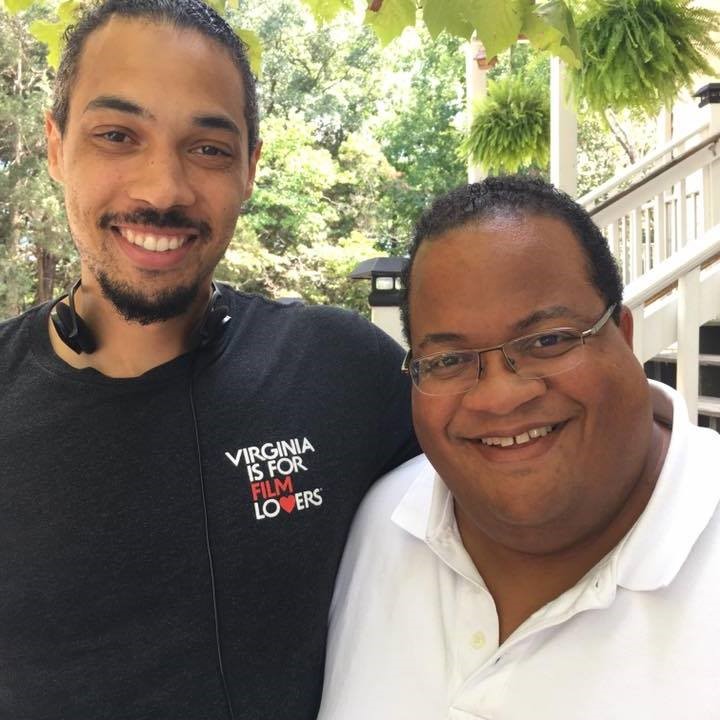
Jamison graduated from Hampton University in 2007 and spent the next 18 months as a kind of nomadic starving artist, taking a whole host of jobs. He was an assistant coach for basketball at the Maggie L. Walker Governor’s School, his former high school. He served as an intern and production assistant on a Spike Lee film in New York. He scored a gig editing together clips for a Lockheed Martin commercial, then traveled to Dallas to work on an independent film.
Then, in a single month in 2009, he received a double dose of good news: he’d won the prestigious Virginia Museum of Fine Arts Fellowship, and he’d been awarded a full scholarship to attend American University in Washington, D.C. This time, he’d focus entirely on filmmaking, looking to earn an MFA in film.
“Part of the reason I wanted to go to AU was because it was close to Richmond, and I wanted to make stuff in and about Richmond,” Jamison said.
He made good on that desire. When it came time to start shooting projects, he made sure to do it in Richmond, even going so far as to shoot his thesis film there. Doing so created a lasting relationship between Jamison and the Virginia Film Office, which coordinates and collates resources for actors and filmmakers all across the state, and its Director, Andy Edmunds.
It was a resource that would prove fruitful for him in the short and long-term—especially with some big-budget Hollywood projects knocking on the state’s door.

Many people have an “I met them!” story—a quick anecdote about briefly brushing shoulders with a famous musician or movie star.
Most don’t involve one of the greatest living actors of our time singling you out in a crowd while dressed as President Lincoln on the set of a Steven Spielberg film.
Then again, this is Jai Jamison. If you’ll recall: he sticks out in a crowd.
In the waning months of 2011, rumors were swirling in Virginia that Spielberg’s latest film, a historical epic tentatively titled Lincoln, would be filming throughout the state. It was the perfect place for a Civil War-era production, as parts of Petersburg, Richmond, and Fredericksburg still had 1860s architecture and land fully preserved. Everyone from the governor to the Virginia Film Office was busy prepping for the production’s arrival, and Jamison, having taken advantage of the VFO’s resources over the last several years, had managed to get some inside information. More than that, he’d submitted a few cover letters for jobs he wanted, and he was shooting for the moon: he applied to be the Richmond PA for both Spielberg and legendary producer Kathleen Kennedy, a frequent Spielberg collaborator.
“Turns out, Spielberg brought most of his crew from Los Angeles. His assistants had assistants,” Jamison said.
It was a no-go for Kennedy, too. Jamison managed to score a job as an office PA, but a day later, he was called up with a possible opportunity. They wanted him to interview to be an assistant for one of the actors in Lincoln, though they withheld specifics. Finally, Kennedy’s assistant reached out and confirmed to Jamison which actor he’d be meeting with: Sir Daniel Day-Lewis.
Yes, he’s been knighted.
He’s also won a record-setting three Academy Awards for Best Actor, along with four BAFTAs.
What, Jamison? Nervous?
“He’s such a chameleon of an actor, I didn’t have a grasp of who he actually was. So because the last thing I’d seen him in was There Will Be Blood, I was just imagining going in and interviewing with Daniel Plainview. Which was very intimidating.”
It went great, and Jamison said it was more of a conversation than an interview. The two spent close to an hour talking about Jamison’s background, growing up in Richmond, and what inspired him. Day-Lewis spoke about his love for the independent film scene in London. He also cautioned Jamison about getting stuck in assistant roles for too long, especially if he had his sights set on something higher.
“He said, ‘I don’t see that for you. If you were to do this, don’t get caught up in it. Make sure you go and do your own thing.’”
After almost an hour, Day-Lewis looked at him.
“How tall are you?” he asked.
“About 6’5” and some change, on a good day,” Jamison replied.
That’s when Day-Lewis explained to Jamison that, in his research on Lincoln, he discovered the 16th president had never met anyone who was taller than him.
“Then he said, ‘I feel like if I were around you every day I wouldn’t feel tall.’ And I was like, oh, okay. Sorry,” Jamison said, laughing.
Day-Lewis apologized profusely, admitting it sounded crazy but conceding it was a part of his process. Jamison spoke to his mom later that day while driving home, telling her what happened. She had a strong reaction.
“My mom’s like ‘What?! I’m gonna come down there!’ And I’m like, ‘Mom. You can’t come down here and threaten the world’s greatest living actor. You can’t do that!’”
It ended up being a well-circulated story on set. Jamison told people he was working with in the office about what had happened. Later, during pre-production, Day-Lewis stopped by the office and spotted Jamison, expressing happiness that he was working with the production.
“And he says, kind of sheepishly, ‘Yeah, I’m afraid I’ve been telling everyone that story.’ And I said, ‘Oh, thank God, because I have been too, and I wasn’t sure if I was supposed to be!’”
A few weeks later, when production was fully underway, Jamison had an opportunity to go to set. Knowing Day-Lewis would be in the scene, Jamison made sure to find a chair, lest his height be a distraction. He hadn’t seen Day-Lewis in costume yet, and when he finally did, it was unforgettable.
“He comes walking by and he’s got his little amble, his walk he does in the film. Had his costume on, he was in full makeup. He looked like Lincoln!” Jamison said.
“He just kind of walks by. Then he turns and he sees me, and we lock eyes, and he’s like, ‘What’s up, Jai.’ And he just keeps walking to set and goes on about his life, and I’m sitting there thinking: ‘Abraham Lincoln just said ‘what’s up’ to me!’”
Many of Jamison’s best, most fruitful professional relationships stem from that shoot. His future short films would be crewed by people he met on Lincoln. More than anything, though, this was the first time he’d seen such a vast, multifaceted Hollywood machine chugging along with what seemed to be a type of effortless inertia. It stayed with him.
“I’d worked on indie films before, in various capacities. It was my first time seeing that peak level of what a machine could look like, with so many parts and so many amazing artists at all levels,” Jamison said.
“Art directors, production designers, camera department, just being able to see a project like that from a bird’s eye view and how massive it was. It was an overall phenomenal experience.”
Jamison spent much of 2012 and all of 2013 in New Jersey, as a freelance music video editor. In 2014, he was tipped off about production commencing on season 2 of AMC’s Revolutionary War drama "Turn" back in Richmond. He spent five months working on the show as a visual effects assistant, which carried him into 2015. Throughout his time on both Lincoln and "Turn," an observation was gestating into a narrative Jamison wanted to pursue for his first pilot script.
It was something he kept noticing over and over again, and was reinforced with every subsequent production that came to town. Something that just didn’t sit right with him.
Nearly every role for black actors in major film and TV shoots in Virginia were for slaves.

There’s a moment in Jamison’s award-winning short film Slave Cry that finds itself living inextricably in the nexus between zeitgeist and cultural time bomb.
In the film, McKinley, a local Black actress played by Jamison’s sister, Courtney, stands in front of the Robert E. Lee Monument as she leads a tour of Richmond as part of her day job. Halfway through her recitation of a whitewashed version of Lee’s exploits—she’s done this a hundred times before—McKinley feverishly switches gears.
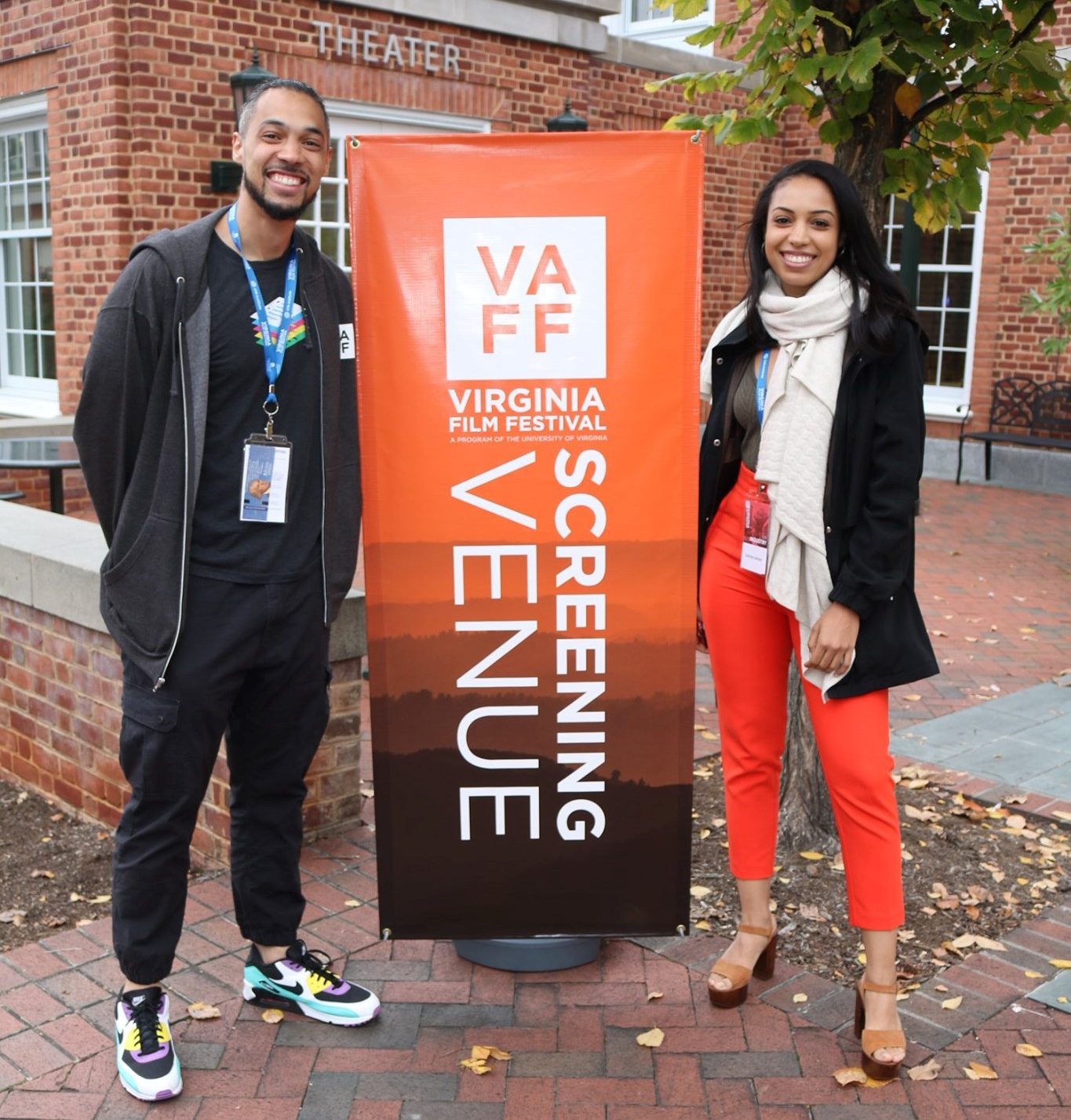
“Famed General of the Confederacy, son of Virginia ... and a man who risked his life fighting to keep my people enslaved.”
As she reels off fact after fact, demythologizing Lee, she wraps it up with an incendiary declaration of independence from everything she’s learned about The South.
“Fuck Robert. Fuck E. Fuck Lee. And everything that you stand for.”
As the scene comes to a close, it’s all revealed to be a daydream, a remarkable “What If” moment that leaves McKinley emotionally drained. Perhaps most remarkable of all: the scene was shot in 2018, more than 18 months before Richmonders began flooding the streets and tearing down the very monuments McKinley rails against during her speech.
Call it artistic premonition.
The short film serves as a kind of proof of concept for RVA, a pilot Jamison wrote a few years prior in the wake of his experiences on film sets around the Commonwealth of Virginia. After finishing "Turn," he wanted to explore what he saw as a troubling and undeniable truth.
“The only roles that were available for local actors of color were slaves, just by the nature of what the shows were about,” Jamison said.
“So I wrote this pilot with the idea of commenting on that, and, ideally, I could create an opportunity for my sister and other local Black actors to break that cycle, to change those circumstances.”
He finished writing RVA, but shelved it temporarily when he got an opportunity to direct his first feature, Tri, based on the experiences of a renowned triathlon competitor. Producer Ted Adams brought him on. It was a monumental challenge. Jamison was brought in after a script had already been written, but ended up having to do a page-one rewrite in only ten days. When it came time to film, he ran more than a dozen camera crews, hidden amongst crowds during live triathlon events.
“What we pulled off, it was kind of crazy,” he said.
“The film that we made, I’m proud of it from the standpoint of it being positive and inspirational. That was my real film school masterclass.”
He and his team edited the film. Did the awards circuit. But he kept coming back to that pilot script. It had been months since he wrote it, so he took out RVA, did a revision, and submitted it to the Nantucket Screenwriters Colony. He got in, and, while there, rewrote it yet again. Once it was over, he decided it was time to visit Los Angeles—in search of staffing, representation, whatever could help him get to the next step. He used the connections he’d built up from his time on various productions, sent RVA out, set up generals around town, and flew to the west coast.
With each person he met with, something became increasingly obvious.
“It was clear in most of the meetings that no one had read the pilot,” Jamison said.
“I wrote this thing that everyone who reads it is like, ‘This is great and fresh and new and I’ve never seen anything like this!’ But then, when it comes down to actually taking these meetings and having people who can set things up for me or take me on, they just hadn’t read it. So I’m like okay, what do I do now?”
One moment stuck out. He met with someone at Amazon (they hadn’t read the script either) but in the meeting, Jai had mentioned his thesis film, a 20-minute short. He sent them the film, and within two weeks, they’d watched it.
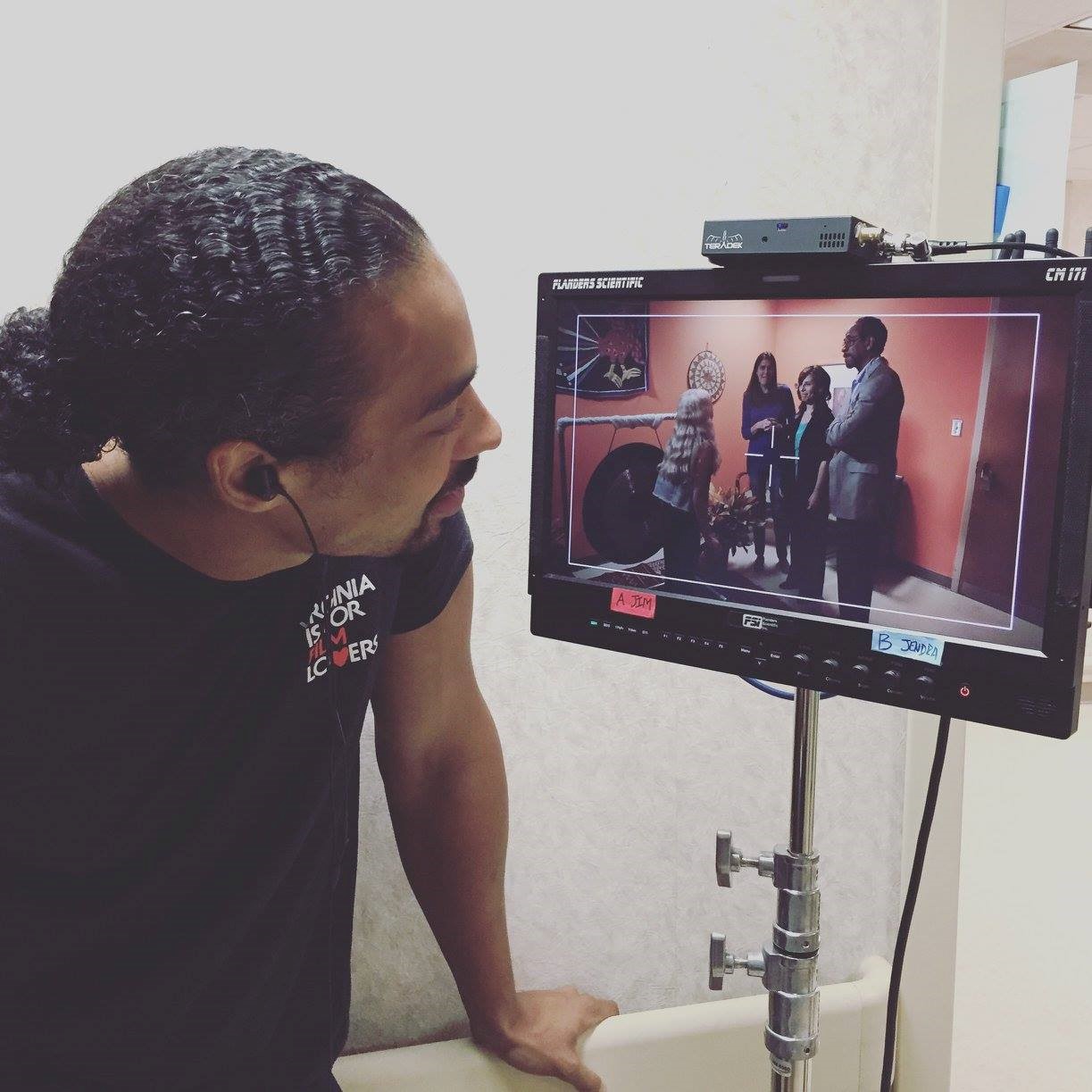
“That told me something, which is, it’s much easier to get someone’s attention if you make a film than if you send a script,” Jamison said.
“People are more willing to watch a 10-minute film than they are to read a 30-page script.”
With that in mind, he returned to Richmond, and toward the end of 2017, he set out to convert RVA into a short, which eventually became Slave Cry. He spent much of 2018 raising funds, shooting and editing, then entering Slave Cry into festivals. In between doing all that, he was still setting up meetings in L.A. and sending the original pilot script out. He began a more aggressive push into TV, writing a spec for FX’s hit show "Atlanta" and editing a feature for PBS in Richmond. He decided that, by the end of 2018 or early 2019, he was moving to Los Angeles to pour all his energy into staffing.
“Just kind of make the leap, figure it out. I didn’t really have that much money saved up at that point. I was just gonna get up and go,” he said.
Then, in December of 2018, one of Jamison’s contacts at the Virginia Film Office told him that Reggie Rock Bythewood, an award-winning writer and director, was scouting locations in Richmond for the AppleTV+ show "Swagger," which he was running. He not only told Jamison the two should meet, but that he’d been hyping up his short film to Bythewood.
Jamison met him at a cafe during a lunch break one Monday afternoon. Bythewood told him he’d heard a lot about Slave Cry and that he’d love to check it out sometime.
“I’m like, cool. I pull my laptop out right there at the restaurant!” Jamison said.
“He’s like, ‘Aw man, it’s loud here, I want to make sure I can hear it pretty well,’ I’m like ‘okay,’ I pull some headphones out, and I give those to him. So he watched Slave Cry right there.”
Bythewood loved it.
“Just the fact that I had something to say, the voice, filmmaking technique, the whole thing,” Jamison said.
He told Jamison he’d already filled the writer’s room for "Swagger," but that he’d try to shuffle some things around to see what he could do for him. That Friday, he was offered the job of showrunner’s assistant on the show.
“Five days after that, I moved to L.A.”

Jamison calls 2019 “Nomad: Year Two.”
He spent much of it traveling back and forth between Richmond and L.A., in service of his new job. "Swagger" was filming in Richmond, and Jamison was uniquely qualified to be on the ground during production in the city, given his familiarity with local crew and the locations. When in L.A., he was able to be in the writer’s room; back in Richmond, when the pilot was filming, he’d crash at his mom’s house.
As the year went on, he took staffing meetings, many of which were set up by writer/producer James Stoteraux. His first was for a genre show on the CW, and while it went okay, his writing on RVA didn’t really align with genre work. From there, he wrote "American Way," a pilot which harkened back to the superhero days of his youth.
“I’ve never written anything as fast as that script,” Jamison said.
It did the trick. He ended up placing in—and winning—screenplay competitions, and he scored several more staffing meetings from the script. In between writing and meetings, he was working nonstop. He estimates he had a total of 14 days off all year and averaged between 75-80 hours of work a week. His duties as showrunner’s assistant included scheduling Bythewood’s day and organizing much of what happened behind the scenes. Even so, he always felt he wasn’t there just to do menial work, but to learn and grow and be mentored.
“He brought me on because he saw potential in me as a filmmaker, which definitely shaped my experience,” Jamison said.
“I was able to give input, sit in the room and pitch, I helped him prep his shot list and whatnot. It was an amazing experience.”

After a little more than a year on "Swagger," Jamison took a staffing meeting for "Superman & Lois." He says some meetings are easier than others—and admits he’s not great with giving a host of reasons why he would be perfect for a given show, but if the conversation centers on his sample and screenwriting in general, it feels much more organic.
Thankfully, this meeting was closer to the latter. They talked a while on the phone about what "Superman & Lois" would be, what the pilot was about, Jamison’s background ... When the call was wrapping up, Jamison was asked if he had reps or an agent. He said he didn’t, but that he’d email his lawyer’s information.
“My lawyer is basically one of my best friends from college who is an entertainment lawyer now,” Jamison said, cracking up.
One week went by. Then another. Jamison hadn’t heard anything. He started reaching out to contacts, seeing if a decision had been made for the show. He was convinced it had gone really well.
Then, out of the blue, his combination lawyer/best friend texts him: “You’ve got an offer, bro.”
Jamison couldn’t believe it. “I’m like ... what? Stop playin’. What?!”
“I immediately called my mom and dad and sister and my friends and was just like—hooooly shit!”
An artistic odyssey that began with a comic books obsession, spanning several cities and short films, brought Jamison full circle, straight into the realm of superheroes and supervillains.
A nomad no more.

It’s perhaps fitting that someone who perpetually lived in between should have to experience the communal joys of a writer’s room in virtual isolation.
Jamison’s inaugural arrival as a staff writer coincided almost exactly with the arrival of COVID-19 in the United States, forcing the room to meet over Zoom after only a few weeks of in-person sessions.
It’s now August. And while much of the world has slowed or stopped, Jamison’s momentum seems akin to one of Superman’s trademark descriptors: faster than a locomotive. He was offered multiple staffing opportunities. He’s been approached by no less than seven managers eager to represent him. His short, Slave Cry, continues to get into festivals. Through it all, he says he always comes back to one thing every artist should be thinking about.
“Know your why. Understand why you’re telling these stories,” he said.
“I was spending years of my life sleeping on friends’ couches, in guest rooms, being a starving artist, racking up debt, being a nomad. My friends are all getting married, having kids, having vacations, and I didn’t have any of that. I either couldn’t afford it or I was too busy working.”
At some point, he stepped back and asked himself—why?
“Because representation matters, because this is the way that I can affect change in my community and in the world,” he said.
“By putting different portrayals of all sorts of people into the zeitgeist, by inspiring people the way that I was inspired by Finding Forrester, by increasing empathy and putting more beauty and hope into the world in general.”
Jamison’s “why” got him this far—he describes his current situation as “comfortable”—but he says he doesn’t plan on resting anytime soon.
“I’ve got my foot in the door now. I’m not a nomad anymore, but it’s like, I can push even further,” Jamison said.
“If you don’t treat your big break as an opportunity to work harder, you’ve failed yourself.”
Follow Jai on: Twitter